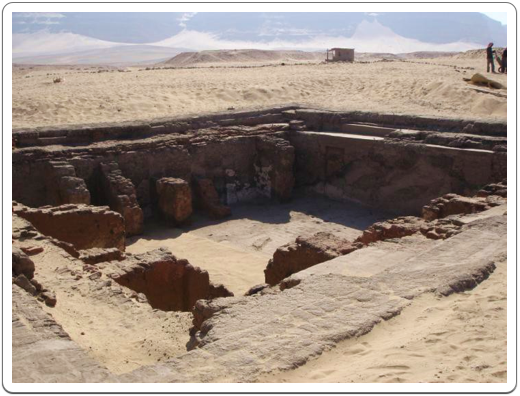Djer built his tomb at Umm el-Qa’ab at some distance to the west of that of his predecessor, Aha. Petrie, one of the archaeologists who excavated the tomb, gave it the designation of “Tomb O”.

Interactive map of the tomb of Djer. Click or tap on the little circles to learn more.
Source: Hadas Newsletter Archive.
Contrary to Aha’s tomb, Djer’s consisted of one single pit measuring 13.2 by 11.8 metres internally and a depth of 2.7 metres.
The sides of the pit are lined with 2.6 metre thick walls. Several smaller chambers were built agains the north, east and west walls, but not against the south wall. It is the first royal tomb of the 1st Dynasty to have an internal structure.

A view on the king’s tomb shows the thick walls as well as the tomb’s internal structure.
Source: Hadas Newsletter Archive.
Among several objects found inside the tomb was a mummified arm, assumed to have belonged either to the king himself or, more likely, to one of his queens. One of the oldest known artificially mummified human remains, the arm wore 4 bracelets, one of which consisted of a string of Djer’s Horus-names.

Four bracelets were found on a mummified arm inside the tomb of Djer.
Source: Tiradriti, Egyptian Treasures, p. 42
318 subsidiary graves, some with stelae identifying the owners, were found surrounding the king’s tomb. The fact that some individuals were named, points to them having had some prestige, if not in life, then in death. It is not certain if all subsidiary burials happened at the same time, and were the result of retainer sacrifice or not.
For some reason, later tradition, started at the latest during the 18th Dynasty, considered this tomb to be the tomb of Osiris, the god of the dead, who had one of his most important cult centres in Abydos.